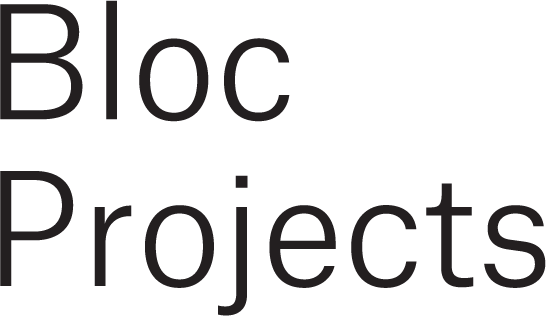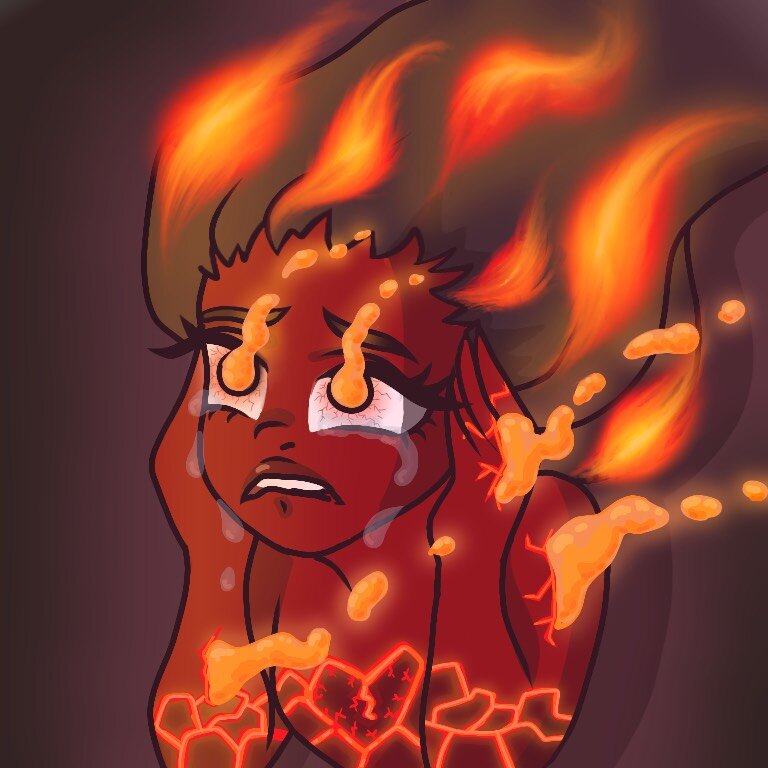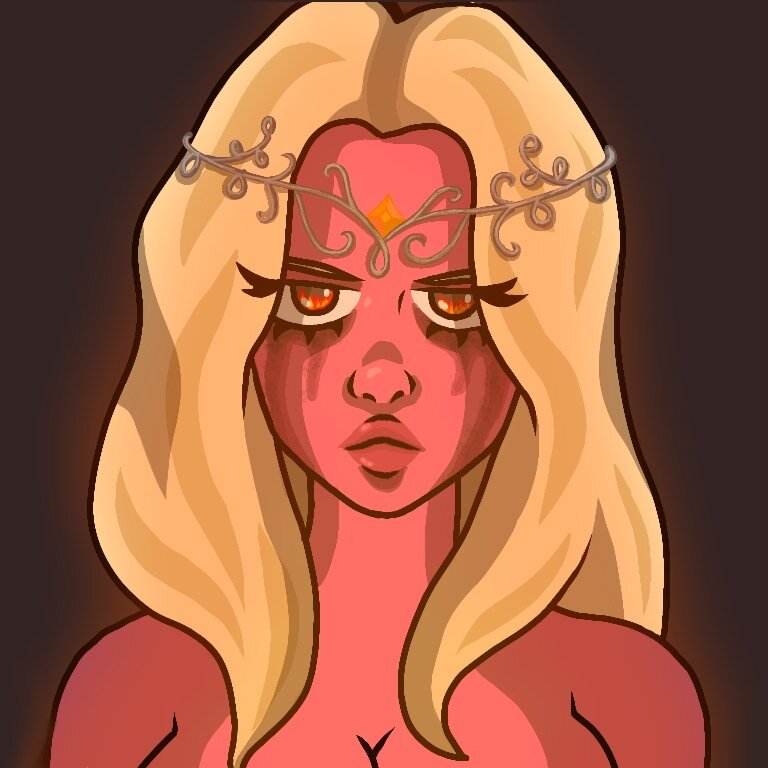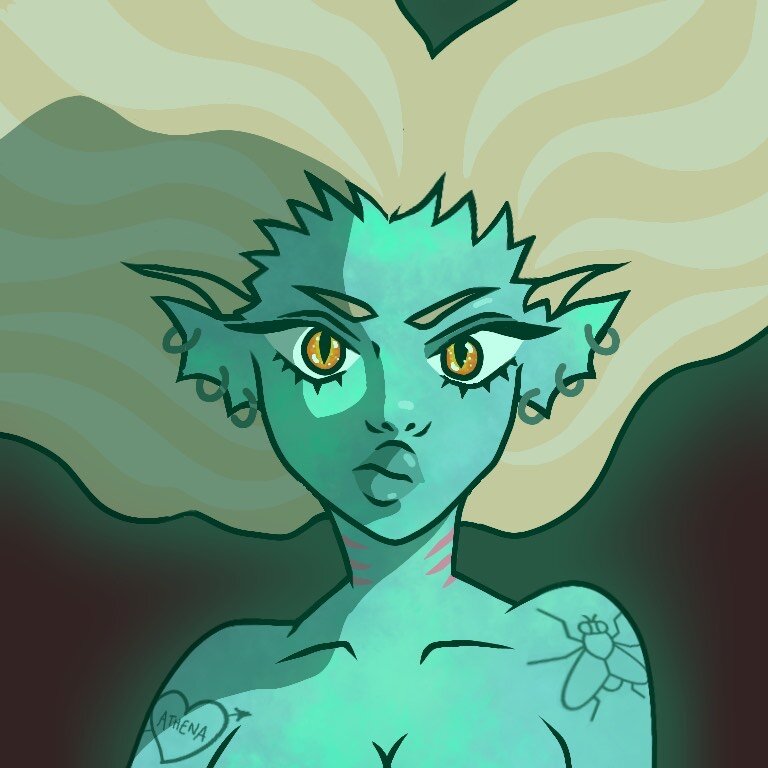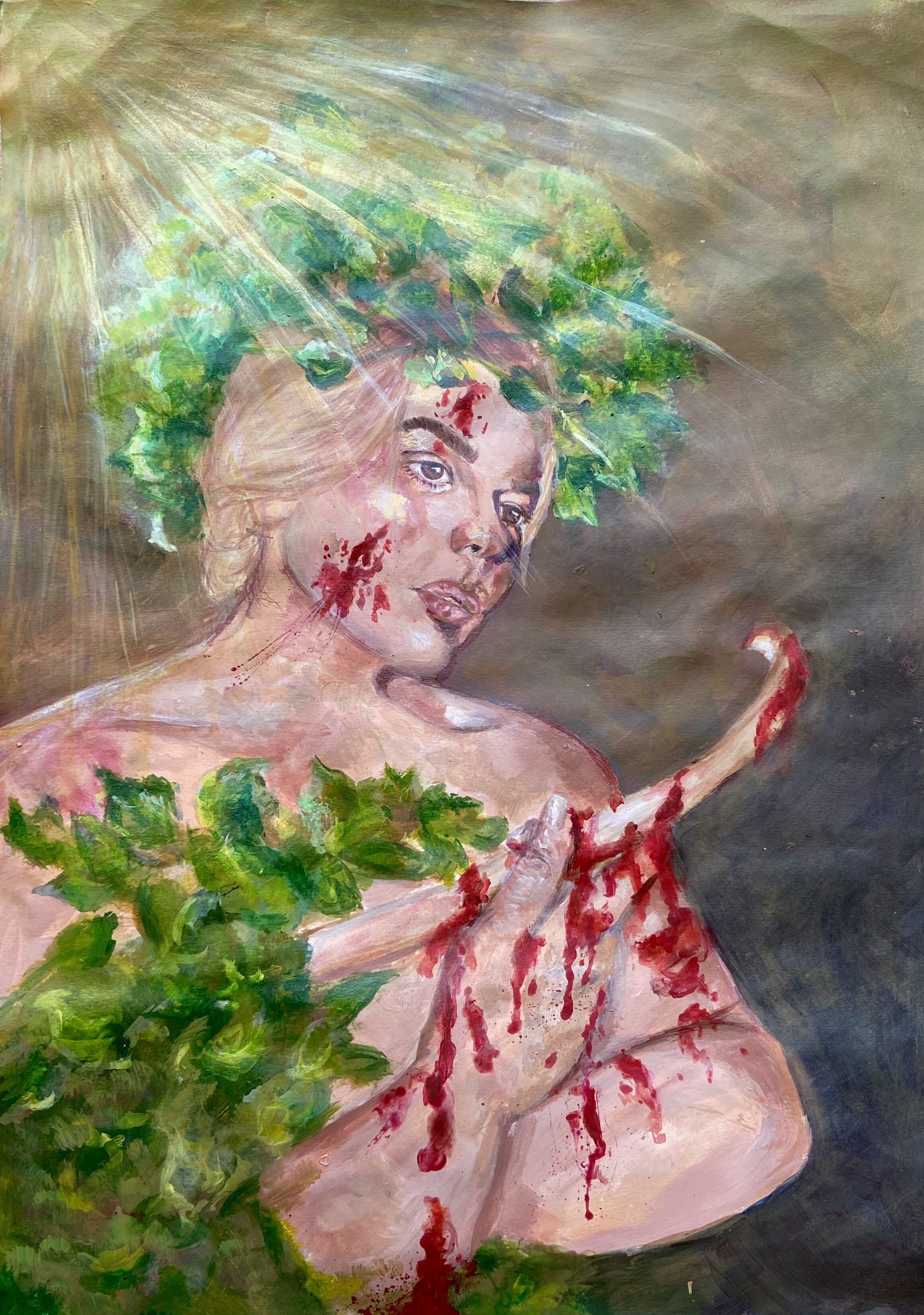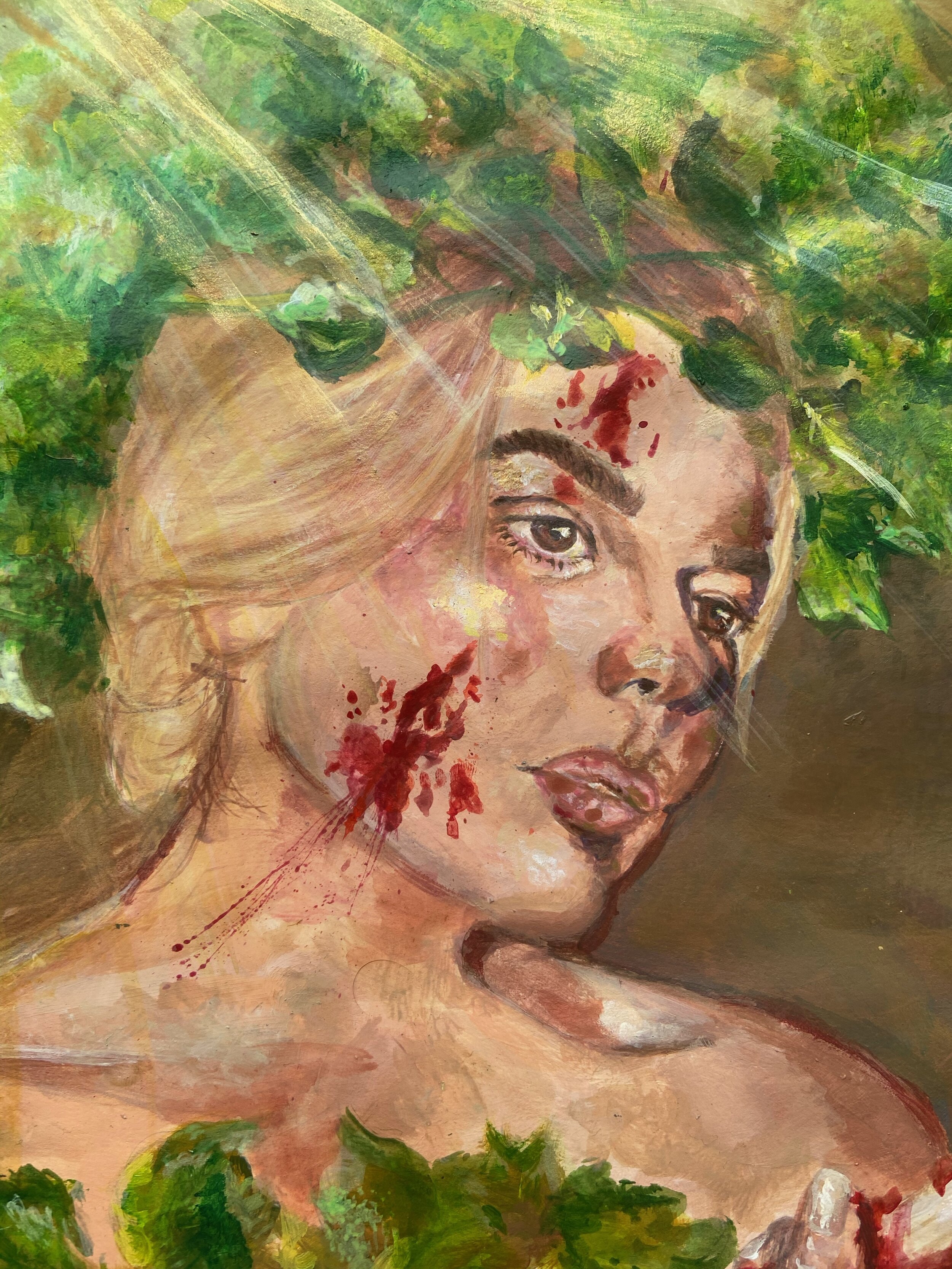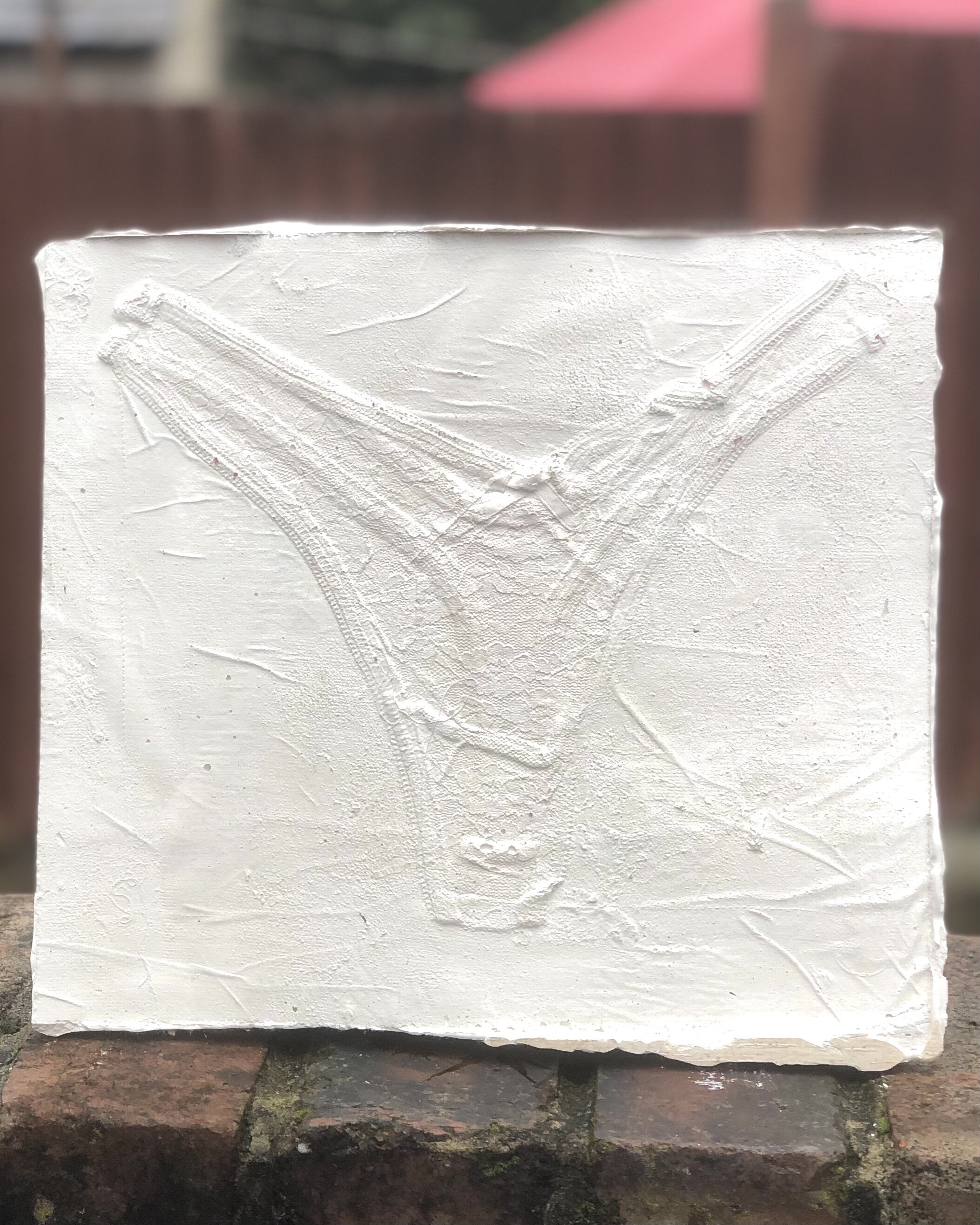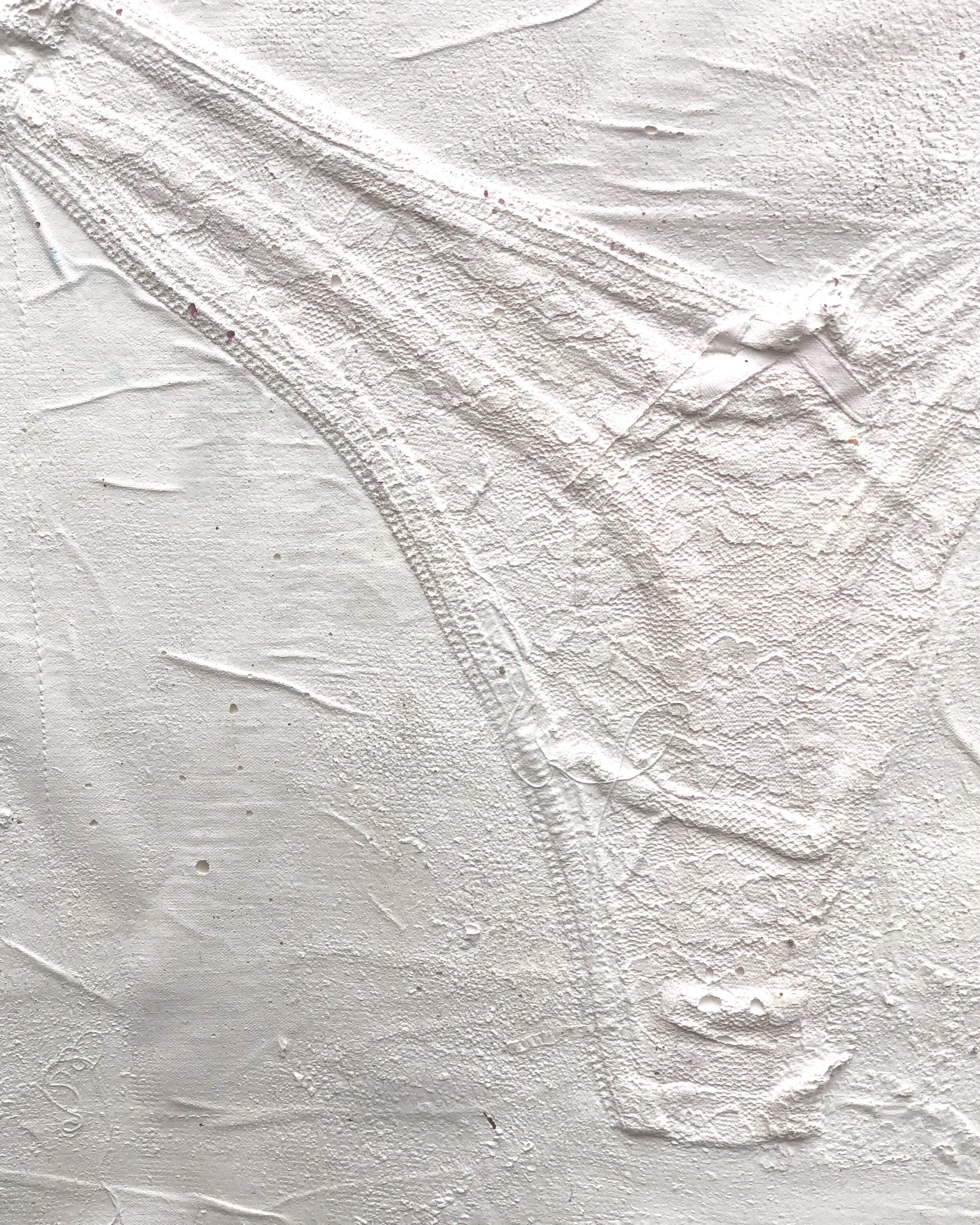Self
15 January - 28 February
Online Exhibition
Chloe White
Eleanor Hurt
Eleanoré Hill
Gee Stacey
Josie Cummings
Lucy Birch
Luke Caton
Lyndon Watkinson
Maddison Acton
Marianne Ellis
Neha Gill
Nicholas Goodall
Rebecca Camelon
Sadie Goswell
Self is an exhibition of new work by second year Fine Arts Students from Sheffield Hallam University.
What is the ‘self’ and how do we relate to that term in the 21st Century? Questions of identity, personhood, empowerment and oppression are explored by the artists within this online exhibition. Often through an activist lens, many of the works explore how the self is defined by looking at the reflexive and social categories that insidiously box us in. In other instances, the artists scour through history and symbolism to help formulate ideas of ‘self’ that are less contained.
More information about the artists can be found towards the bottom of the page.
Reprocessing Pride, film
Chloe White
Golems, sculpture, 149 x 149 x 44 cm
Eleanor Hurt
Women of Myths, Victims of Man, 20 x 20 cm
Eleanoré Hill
Bad Girls World
(from left to right)
I don’t behave, collage, 18 x 28 cm
WANYK, digital collage 767 x 1345
Stop Digging, collage, 19 x 28 cm
Gee Stacey
Women Play Football Too, film
Josie Cummings
Cosmos, painting, 70 x 50 cm
Lucy Birch
The Human Experience, ink on parchment, 21 x 30 cm
Luke Caton
(top left) Cup, digital collage
(top right) Fragile, digital collage
(bottom left) Maplin, digital collage
(bottom right) PAPERplus, digital collage
Lyndon Watkinson
The Revenge of Eve, painting, 31 x 42 cm
Maddison Acton
The Modern Scroll
(from left to right)
Bretman, painting, 41 x 49 cm
Doja, painting, 41 x 49 cm
Kylie, painting, 41 x 49 cm
Marianne Ellis
Mirror Mirror…, photograph, 59 x 84 cm
Neha Gill
Retrained in Bondage
(from left to right)
Collared Naughty bugs bunny spanking gagged female bunny, drawing, 21 x 30 cm
Spiked collar man in hand restraints., drawing, 21 x 30 cm
Red skin hybrid gargoyle gagged, drawing, 21 x 30 cm
Nicholas Goodall
dear, men and women, digital poster, 46 x 61 cm
Rebecca Camelon
Airing My Dirty Laundry, plaster cast, 28 x 26 cm
Sadie Goswell
Chloe White
My practice explores being a queer artist in an ever-expanding digital world. Previously, I’ve worked with installation, photography, textiles, jewellery and zine making. Taking inspiration from my childhood, make up, colour and fashion, my past works explored topics of feminism, dreams and social media. After a year of having to transform my work to the digital realm, I’ve found that it is my preferred medium. My most recent work involved reappropriating artworks into neon, glitching protest posters and incorporating them into a short film on the queer club scene and the people who made it possible. I’m inspired by both the history of LGBT+ folk, as well as by the new digital artwork of artists such as Signe Pierce, which provides a new perspective on LGBT+ life and identities. My piece Reprocessing Pride explores the queer community, places of safety for them, pride events, dance, music and protests in the past. Whilst working on this piece, I pondered how these communities and spaces can survive online, in the midst of both a global pandemic and an ever digital world. What will become of the future of queer culture? These are questions and themes explored within the work, as I bring together both the LGBT+ scene of the past, which has paved the way for future generations, including myself, and the digitalised present.
Eleanor Hurt
My work investigates ideas of mutable and evolving identities. Employing playfulness and humour, I draw on ideas from frameworks such as aspects of psychoanalysis and surrealism, and reference the visual aesthetics of cartoons, fossils, horror, and an interest in the small and tactile, such as pebbles and shells. I work across media using shape, pattern, and semi-figurative forms. My sculptural work is intended to be accessible and touchable, enabling an audience to connect to the work in a playful way, and to consider their changing experiences of what it is to be human.
Eleanoré Hill
I have been researching the Gods of Olympus, and Zeus himself interested me most. Not him specifically, but the company he kept within his marriages and also his affairs. He had many lovers throughout Greek mythology that he treated so unfairly to the point of causing physical and emotion pain, sometimes even death. I wanted to give these women a voice and show them as main characters and not just people mentioned once in an age old story. They are victims of an all powerful God’s misconduct. In the work I’ve included there is Hera, heartbroken queen of the Gods who has been hurt time and time again by Zeus’s infidelity, Metis, an oceanid and first wife of Zeus who was betrayed and murdered by him, and Semele, his secret lover whose only wish was to see her lovers true form and it cost her life. As women, we should make these characters seen and heard by all, especially when myths like these are a common subject taught in schools and the abuse women faced is readily ignored. All I’m saying is maybe Zeus, God of moral conduct, doesn’t have morals himself.
Gee Stacey
We Are Not Your Kind. Slipknot released All Out Life in 2019 containing that lyric and it has stuck with me ever since. I’ve been in the alternative community since I was 13 and it is a beautiful place to be. I’ll never forget walking into Download Fest at 15 years old and seeing everyone look just like me and enjoy the music as I do. Me and my brother have been part of it for years. However to the outside world, we’re still just really fucking weird.
This year seeing as our gigs aren’t happening, I can’t meet people in person and all our clubs are shut, I thought I would reach out using social media and build a project around us to showcase us to people who wouldn’t normally see us. This is a teaser of what I have planned. I am researching sexism and femininity in alternative spaces as so many women don’t have a voice.
These pieces were created using acrylic paint, fine liner, watercolour, colour pencil and a range of techniques. One of the techniques I am experimenting with this year is collage. These are all made separate and pasted together with the intention of their being part of a bigger piece. However they can also stand by themselves. These are collaborative pieces: the girls sent me their fave lyrics and the photos they wanted to use in the project, as I wanted the community to be involved as much as possible.
gstacey98.wixsite.com/skarletzombie
Josie Cummings
My project is about sport and the movement of the body. From my research and understanding I looked at different areas of the human anatomy such as bones, muscles and cells to help me create what I’m interested in. As my project is about football, I have used photos and videos to document me and my team mates playing and capturing the warm-up, ball work as well as a match video.
I am passionate about football and I wanted to show why I like it and what excites me about playing. To be able to combine my artwork and play at the same time has helped me gather information and first-person videos, photos as well as notes and interviewing team-mates.
The artists I looked at were Edward Muybridge and his series of drawings of people’s movements. His sports series includes drawings of men and women doing day to day things. I wanted to prove in my work that women can be sporty too. The other artist I looked into was Pheobe Davies. I visited her recent exhibition at Site Gallery and it was a film of women’s wrestling. Her work was inspirational and helped me understand why sport is important.
From my starting point to my final piece, I had many ideas and possible routes to go down, and there is no better way of showing you what I love and am passionate about than through my film.
Lucy Birch
In this most recent piece, spray paints of purple and lavender have been used as the background, inspired by the quote "Womanist is to feminist as purple is to lavender" by Alice Walker. I wanted to make sure that the figure looked confident and had a sense of strength to them, even without the head. I took inspiration from Greek statues for this as they often look very noble despite frequently having missing limbs. They are shown in a vulnerable state with missing limbs and are only there to be observed and yet are viewed as powerful.
Colours are an important aspect of my work. The colours I typically use symbolise a stereotypical and exaggerated view of femininity, used behind acrylic paintings of women. This is an exploration of sexualisation and body image issues, especially made prevalent due to social media.
The women featured in my paintings are kept headless, often with other parts of their bodies either remaining unpainted, or partially blended into the backgrounds. This keeps the women anonymous, giving a sense of permission for viewers to look at the figures while the women themselves cannot engage back. This relates to my research with the idea of Gaze Theory, a concept introduced by Laura Mulvey.
My paintings offer a dream-like state captured in the canvases, the bodies suspended in vibrant colours that have a airbrush quality, inspired by digital works such as Tishk Barzanji and using a collage-like approach similar to artists like Linder Sterling.
Luke Caton
Translating, breaking down and distorting information, with the intention of crafting a new complex form when put back together. The idea behind my methods began as a doorway into the human experience, and what better way to become closer to understanding than with information itself. Taking blocks of text and translating it into a sigil takes a lot of time, and the result is unintelligible. But that to me is the most interesting part, I could have used anything to start the process. But it is really an exploration into myself, as most of the work I have produced is in essence a self-portrait. Just masked behind hundreds of small sigils.
The point of my work is to investigate ways of breaking down information and showing it in a way that confounds the viewer. I want it to invite intrigue, and let it tell its own story through the viewers own experience. Of course, I know that people may see my work as simply repeating imagery, and that is okay too. I want people to be able to experience the things I make at their own pace. I don’t want to describe it as just “pretty”, but in essence the methods I have employed are to create interesting works that inspire the viewer, letting them in on the tiring effort I poured into each line. As a simple way of showing there is more to each symbol.
Lyndon Watkinson
I am fascinated by the way people, countries, and cities can be represented by an often basic, yet symbolic design on a piece of fabric. I found that the more I studied flags, the more I began to realise how little I really understood about my own identity. Conventional flags are stagnant and infertile. They are at the height of representation the moment that they are established, and will over time mean less and less to the inhabitants they claim to represent.
It’s no ones fault that we still fly dated flags; it is our predecessors desire to cling to tradition that has facilitated our current generations disillusionment towards the symbolism that they are told they are unified under.
In this body of work, I wanted to replicate this feeling of misrepresentation by way of out-of-date flags, by making flags that I know will mean absolutely nothing to nobody.
I did not want to make something entirely critical, which is why the process I used to make these flags are built up in systematic, chronological stages. They are all represented in the final product and nothing is twisted or hidden. My flags represent everything that was put into them. From the exact shades of the oil pastels and pencil I applied, to the postage labels, barcodes and serial numbers that were stuck to their original canvases.
I wanted to use my creative ability to present an alternative way of producing flags which celebrates everything about it that makes it unique, that will also adapt and change in co-ordination with the progression of the people, city or nation it is intended to represent.
Maddison Acton
I originally started researching the subject of gender. This led to the narrowing of focus upon the differences between male and female representation within art. I wanted to highlight the hyper sexualisation of the female form being praised in art, but leaving out the representation of female artists.
Through photography and painting, I wanted to develop a narrative showcasing the divide between the sexes and break the traditions by presenting a more androdgynous form, inspired by The High Renaissance. I have an appreciation for the aesthetics of the movement, primarily the religious art created due to my own Catholic upbringing and familiarity with the stories behind the depictions.
Leading from this familiarity my photography took a political turn when combining religious imagery and gender in modern society. This exploration in photography created the idea behind my painting The Revenge of Eve. By representing the independence of Eve I emasculate the role Adam plays in previous portrayals. Taking inspiration from Artemisia Gentileschi's Judith Beheading Holofernes, I incorporated the graphic vengeful imagery through Eve's holding of the rib bone.
The use of more earthy and lush green tones are used to allude to The Garden of Eden and allow the blood and violence to be the focal point of the piece. The overall beauty and serenity is overlooked by the gory splashes of red further emphasising the hidden strength of a woman.
Marianne Ellis
My piece explores the ideas of influence from social media with the enhanced colours you see, the modern popular poses and the trends that are set. I wanted to create a modern digital effect but using a traditional art style by painting with acrylic and I used simplistic block colours to show the shapes that people look for and create when posting their pictures on social media. The added lines around the painting using Posca Pens was done to emphasise the shapes of the subject’s body and clothes in the way they were positioned in the picture. My work is mainly influenced from what I see on social media such as Instagram or Tiktok, as I find it interesting to study how people present themselves through their poses, clothes, trends or style. An artist that influenced me was Richard Prince’s later work which was based around Instagram because it led to the way I made my pieces by adding the black boarders. I wanted these paintings to transmit the edited and ‘perfected’ images of social media.
Neha Gill
Throughout this project I have been exploring my experience and struggles with my identity regarding my race, heritage and culture. This project is me showcasing my own issues surrounding dual identity and self-image through; collage, writing, painting and photography. I have found over the years that I am constantly torn between two worlds in terms of who I am. I began to look back at old family photos and home videos and realised how out of touch I had become with my culture. I also began to re-watch old Bollywood films and listened to songs from my grandparents’ time, to re-live the nostalgia of a time when my heritage was not something I was embarrassed of. I decided to have conversations with members of my family and community, specifically the women in my life about their experiences with immigration, growing up British Indian and integrating into British culture and western society. I did not record these conversations as I wanted them to be as raw and honest as possible, but then retrieved key quotes from memory that had stuck with me. I began to make collages from vintage Bollywood stills specifically focusing on controversial female characters and incorporated my primary research and my own writing with these collages. From this, I began to focus on self-portraits. My main intention with these portraits was to evoke a sense of juxtaposition and conflict which I often feel when thinking about my identity.
Nicholas Goodall
My project theme is bondage and is titled Restrained in Bondage. I have chosen bondage because it is an interesting subject to me as I wanted to share my experiences in an art form. This then enabled me to plan out my ideas which then led me to design my own characters as well as looking at artist Robert Crumb’s work for inspiration. I approached my project to re-create and display a well known fetish. I gathered research and came across an interesting read titled, “The Extended History of BDSM” as this was necessary for my research and art practice.
The source of the text reads, “History of BDSM is complicated and revolutionary, history filled with strong women and men”. It has become a lifestyle with it’s own set of rules and orders. A culture of people wearing a collar, tied up with ropes and gagged. Definition of BDSM is, discipline, domination, submission, sadism and masochism. In the early twentieth century it portrayed men as sassy and sissy weak men.
At the early stages of my project the ideas around the human form and gargoyles evolved and changed. I explored various techniques and used a range of materials, pencils, watercolor, acrylic and oil paints. The three final pieces I have chosen for my exhibition is, Collared Naughty bugs bunny spanking gagged female bunny, Red skin hybrid gargoyle gagged and Spiked collar man in hand restraints. The outcome of all my final ideas have a sense of comedy, humour and character.
Rebecca Camelon
My work is very personal to me. I prefer working with my experiences and what I enjoy in life. My most controversial topic as of right now is my work on women in the gaming industry and portraying my own experiences with misogyny and sexism. I use graphic design and mostly digital work to portray this as usually it is posted on the internet where it is most accessible by girls like myself. This way everyone and anyone can see what I make and have a discussion. This direction I am going in came from my good and bad experiences being a female gamer playing many male dominant games and I try my best to make something out of it, making something that we can talk about and finally realise all the things we do wrong. Men and women have internalised misogyny but it’s about learning and changing which is what I am trying to do, helping people realise their mistakes and correcting themselves for the future to make the gaming industry more inclusive towards women.
My other practice is more traditional. I tend to work in a very specific style to my culture, which includes the materials and medium I use, mostly watercolour and ink but occasionally I will paint on canvas. I’m heavily inspired by my own culture of Thailand and a culture similar to my own but much more noticeable the Japanese culture. With this practice I make illustrations, textile patterns and items that have heavy influences and meaning behind it, right now I am working on the idea of prey and predators, the Neko (The cat) and the Fish. These two figures I use in a lot of my pieces since they are heavily ingrained in my culture as some of the most important animals. I use a lot of symbolism since my work seems to be very straightforward and mostly just pretty to look at but of course if you know the symbolism then that’s all that matters. I tend to use the same palette, colder tones to portray fresh and light characteristics and I enjoy using lighter more muted colours in contrast with my heavy use of navy and indigo.
I’m an artist who prefers making work that is tangible to everyone and can be understood and taken into consideration much more easily than many.
rebeccacamelon.wixsite.com/kikudesigns
Sadie Goswell
My piece, Airing My Dirty Laundry, is made using a plaster of Paris cast. Within this cast, lies a pair of my knickers. My underwear has played a prominent role throughout my practice, used for an exploration of themes including my own identity as a woman, privacy and taboo. Womanhood is something that has continuously motivated my practice and lead me to think more widely about experience, time and fragility.
My practice interrupts the boundaries of privacy and instead offers a gentle display of honesty and delicacy. The plaster plays an important role in my work, providing a subtlety when combined with items of an intimate nature. It captures my underwear and suspends them in time, allowing them to exist as a static symbol of womanhood, protected in a dainty white cast.
